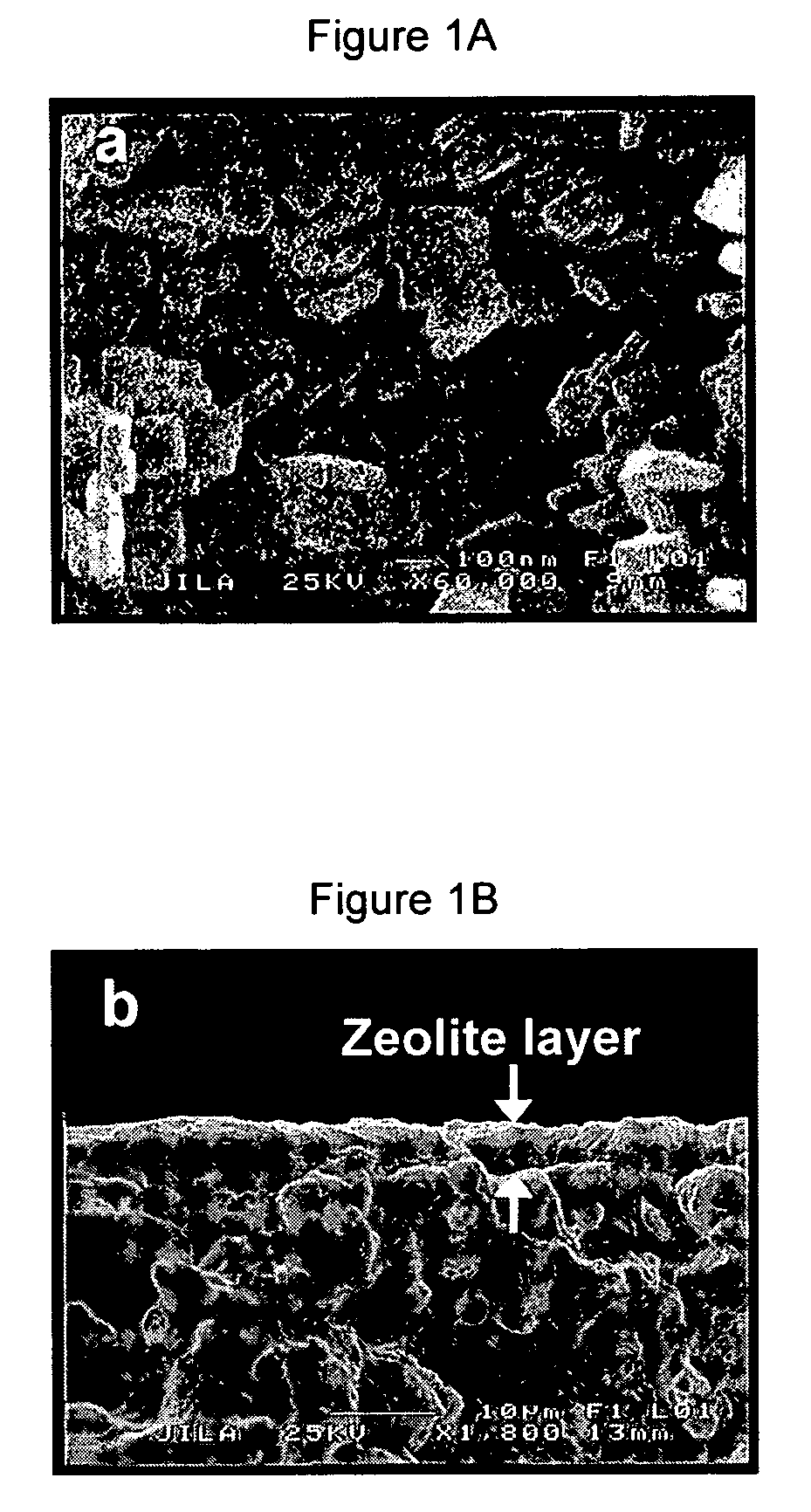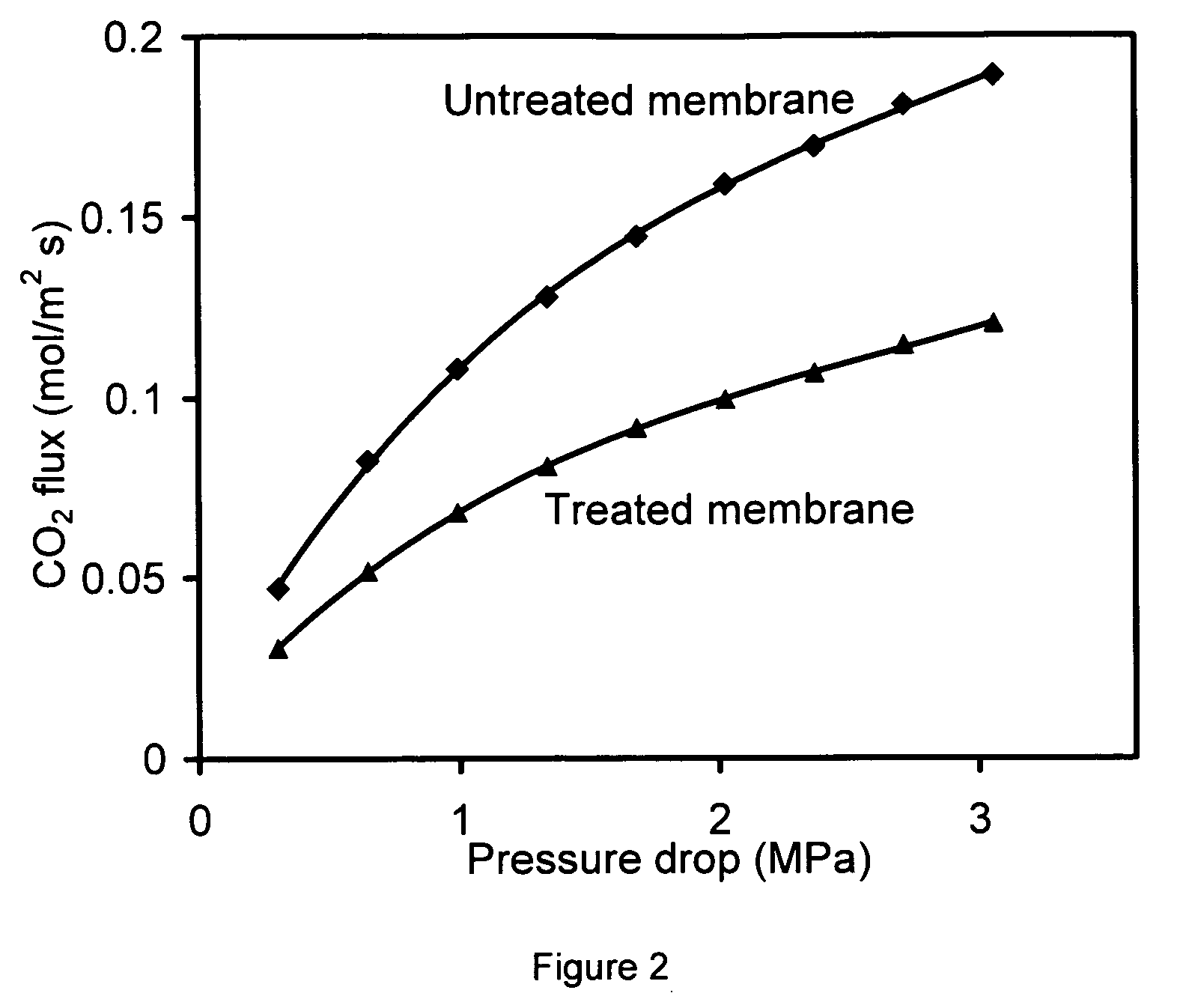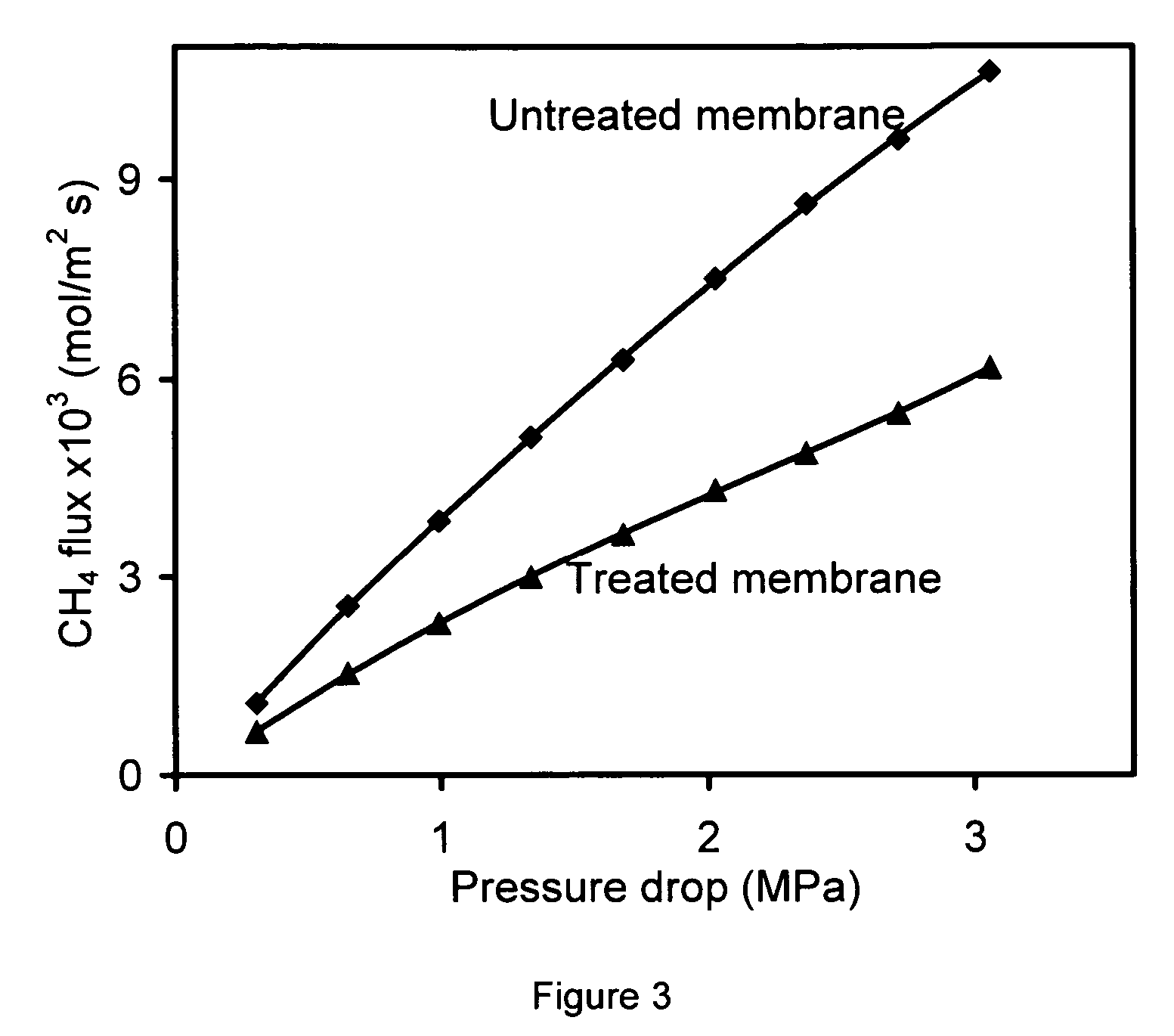Membranes for highly selective separations
a membrane and selective technology, applied in chemical/physical processes, gaseous fuels, hydrocarbon purification/separation, etc., can solve the problem of limiting the use of polymeric membranes for cosub, and achieve the effect of improving the selectivity of membranes for co2/ch4
- Summary
- Abstract
- Description
- Claims
- Application Information
AI Technical Summary
Benefits of technology
Problems solved by technology
Method used
Image
Examples
example 1
Preparation of SAPO-34 Membranes
[0082] SAPO-34 membranes were prepared on porous stainless steel tubes. These tubes had approximately 4-μm pores, a length of approximately 30 mm, an inner diameter of approximately 7.2 mm and an outer diameter of approximately 9.5 mm (81180-017-PRDC-TEST, Pall Corporation). Non-porous, stainless steel tubes were welded onto each end of the stainless steel support to prevent membrane bypass and to provide a sealing surface for o-rings. The combined length of the combined porous and dense tube assembly was approximately 59 mm. The permeate area was approximately 7.8 cm2. Before synthesis, the tube assembly was boiled in purified water for 3 h and dried at 373 K under vacuum for 30 min.
[0083] The synthesis gel had the approximate molar composition: Al2O3: P2O5: 0.6 SiO2: 1.07 TEAOH : 56 H2O, and was prepared by stirring H3PO4 (85 wt % aqueous solution), Al(i-C3H7O)3 (>99.99%, Aldrich), and H2O at room temperature for 12 h. Then the template, tetra-eth...
example 2
Modification of SAPO-34 Membranes
[0087] Membranes made on the inside of a tube as described in Example 1 were mounted in a stainless steel module, and sealed at each end with silicone O-rings. The module was heated to 220° C., and NH3 gas was then introduced to the membrane for 2 h. The feed pressure was 118 kPa and the permeate pressure was 84 kPa. Without wishing to be bound by any particular belief, it is believed that that the NH3 reacted with the acid sites of the SAPO-34 to form NH4+-SAPO-34.
example 3
Transport Properties of SAPO-34 Membranes
[0088] Single-gas and mixture permeation was measured on a system similar to that used by Poshusta et al. (Ind. Eng. Chem. Res., 1998, 37. p. 3924), but modified for the study of light gases at pressure drop as high as 3 MPa. The membranes were mounted in a stainless-steel module, and sealed at each end with silicone O-rings. Fluxes were measured using a soap-film bubble flowmeter and a stopwatch. The lowest measurable permeance was estimated to be 9.6×10−11 mol / (m2 S Pa).
[0089] Carbon dioxide and CH4 single gas and mixture permeation was investigated as a function of temperature and pressure drop for some membranes. For mixture separation, mass flow controllers were used to mix pure CO2 and CH4 gases. The total flow rate was 1300 mL / min for most of the experiments. The pressure on each side of the membrane was independently controlled between 84 kPa and 3.4 MPa. To carry out gas separation below room temperature, the membrane module and so...
PUM
| Property | Measurement | Unit |
|---|---|---|
| Temperature | aaaaa | aaaaa |
| Temperature | aaaaa | aaaaa |
| Pressure | aaaaa | aaaaa |
Abstract
Description
Claims
Application Information
 Login to View More
Login to View More - R&D
- Intellectual Property
- Life Sciences
- Materials
- Tech Scout
- Unparalleled Data Quality
- Higher Quality Content
- 60% Fewer Hallucinations
Browse by: Latest US Patents, China's latest patents, Technical Efficacy Thesaurus, Application Domain, Technology Topic, Popular Technical Reports.
© 2025 PatSnap. All rights reserved.Legal|Privacy policy|Modern Slavery Act Transparency Statement|Sitemap|About US| Contact US: help@patsnap.com



